When it comes to game releases every year has its big headliners and hidden gems, but none were more packed than 2017. As my backlog-related project for this year I'm looking to build a list of a hundred great games that debuted at some point in 2017, making sure to hit all the important stops along the way. For more information and statistics on this project, be sure to check out this Intro blog.
As I mentioned last time, the intent for September was to dedicate myself to the single most pressing game in my 2017 homework pile: Nihon Falcom's The Legend of Heroes: Trails in the Sky the 3rd. The game originally debuted way back in 2007, but it took ten years for the localization to happen - A) because the game's script is enormous, and B) because so were the scripts of the prior two games and they kinda needed doing first - so it appeared much later as a 2017 release in the west, already a few years after the Trails of Cold Steel localizations began popping up. It's a bit of a weird series, but one that has rewarded the patience of those diehard fans who have to play them in order: the next two games after Sky, Trails from Zero and Trails to Azure, are confirmed to be on their way and will take less time due to having competent fan translations to build upon. (Incidentally, I bought the first Trails of Cold Steel for PS3 almost five years ago but have been putting it off until I'm all caught up. Just two more intervening games to go!)
Anyway, I'll get more into Trails - significantly more, since I've little else to talk about this month - just below, but suffice it to say it's been a lean month with regards to this project specifically. There's a bonus short Indie I managed to squeeze in during the final hours of September, but I think I'm going to spend October making a big push towards completing as many of the remaining smaller Indies on my to-do list as I can. I'm also going to focus on the more horror-themed 2017 games I have sitting around, like the acclaimed Detention and the visual novel The Letter (which will be doubling-up as this month's VN-ese Waltz entry also, since I'm very economical with my laziness). I'm hoping to make one last push to get over that 100 list entries milestone by Halloween and dedicate most of November and December to playing newer games for the sake of GOTY season... with perhaps a few 2017 stragglers here and there too, of course.
For now though it's time to hit theTrails, pardn'r.
The Legend of Heroes: Trails in the Sky the 3rd
[The prior Trails in the Sky the 3rd review can be read in last month's entry of Dredge of Seventeen. This is meant as a continuation, after completing the game.]
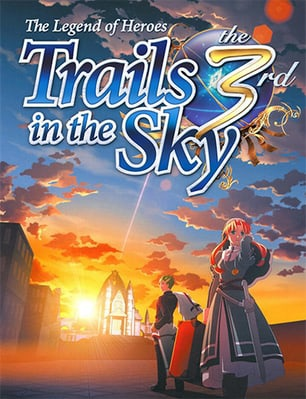
When I started Trails in the Sky the 3rd, or expressed my intent to start playing it, one of my Twitter mutuals told me that she was glad that I was giving it a shot because there's a fan sentiment - particularly from those hurrying to catch up to where the series is currently, some eight games later - that Sky the 3rd is considered "inessential." She also asserted how bizarre she found that belief, given the quality of Sky the 3rd and how right it does by fans of the first two games and that of Trails as a whole. After completing the game, I feel I have to concur with her while also understanding where that sentiment originated: Trails in the Sky the 3rd is easily the match of Trails in the Sky Second Chapter and well worth the investment in its slightly unusual format, though with the caveat that it exists mostly as an epilogue or an interstitial entry - something that wraps up the previous story arc set in this universe while sowing the seeds for those yet to come.
In fact, I have a tremendous amount of respect for how it sets up the next two sequel series - Azure/Zero and Cold Steel - by discussing the regions of Crossbell and Erebonia respectively, establishing the current precarious political climates in both nations that their related games will go on to develop further and make central to their overarching narratives. I'm not sure how solid Falcom's sequel plans were at that stage, but putting into motion that early for what would eventually become six games' worth of plotting is some pretty confident worldbuilding. Of course, I'd expect nothing less from the team that developed Trails in the Sky and the level of detail involved in creating Liberl and its vast number of named ancillary characters. It feels very "Marvel Cinematic Universe Phase 2": reaching that point where a franchise has already spun enough gold that everyone's fully on board with seeing how far they can take it. Given Japan just saw the release of the eleventh game to carry the Trails name, Kuro no Kiseki, it sounds like an investment well made.
The best way I can describe Trails in the Sky the 3rd is by going back a few decades to a time in my life when I was buying up cheap DVDs en masse. In this analogy, the first two games are like a fantastic movie and its equally good sequel and the third constitutes all the featurettes, deleted scenes, documentaries, commentaries, and other short-form bonus goodies you received by buying the special edition DVD boxset. The 3rd's story and structure barely hold themselves together under closer scrutiny barring the moments when it focuses on protagonists Kevin Graham and Ries Argent and their strained relationship, but for proponents of the first two games it's all the fanservice and extra lore you could want. Each Sun, Star, and Moon Door is a portal to a post-script (or prequel) short story based on all the characters that filtered in and out of your party across the first two games. The main progression also gives you the opportunity to recruit a couple of reformed villain types who turn out to be way more fun when they're on your side.
However, the game is also as much of a mechanical evolution as the second game was to the first. Not only did Second Chapter start you off at a higher level, but from the outset it granted you all the mechanics that were slowly introduced across Trails in the Sky First Chapter - like the powerful "S-Crafts" - and continues to add to that complexity, side-stepping the usual "slow start" issue that plagues most RPGs of a certain length. Second Chapter's combat system starts off fully formed and only continues to develop from there, and the 3rd provides a similar set-up though with perhaps slightly less development involved. Instead, most of the 3rd's mechanical development comes from outside development: the unusual rules and systems of the spectral world of Phantasma where the game is set, where each dungeon might warp around and drop you somewhere unexpected with new rules that you're required to follow to make progress. The 3rd's boss fights are also some of the toughest in the whole series: the game fully expects you to know how everything works by this point, including an ideal orbment set-up and using certain time-manipulation mechanics to their utmost (especially the AT-Delay and Impede functions) and throws every challenge it can at you.
The new format - everyone's trapped in a dungeon apparently powered by thought and illusion - means there's some ideas they can implement that wouldn't really work in the more realistic version of Liberl and the Zemurian continent the franchise calls home. A minor but amusing narrative touch is having everyone comment on the new enemies based on undead monsters and demons: neither exist, or can exist, in the game's "real world" and serves as an early indication that this is an illusory world, whereas in most other fantasy RPG universes the characters just kind of accept that hellspawn are walking the Earth. It also allows the character designers some fun coming up with models for what are mythical beings in the religion of the game's world, thematically fitting with Kevin's and Ries's roles as "Gralsritter": powerful enforcer knights of the Catholic-esque Church of Aidios. After all, with all the strong monsters you've taken down throughout the first two games, the only place left to go is legendary demons (something I believe was the case for the later Baldur's Gate expansions too).
Even stronger than those demons, though, are certain characters known in the overarching narrative for their sheer overwhelming strength that you also must fight: the most notorious of which being Cassius Bright, former S-rank Bracer and current Brigadier-General of the Liberl Army (and Estelle and Joshua's father). Much like Loewe the Bladelord during the late-game of Second Chapter, this is a wake-up call boss battle that will absolutely ruin you on the first attempt and any attempts thereafter until you intuit the very specific tactics required to defeat them (which for me involved a lot of turtling with the overpowered Earth Wall spell and hitting them with any stat-down debuffs I had available). It's an exciting if frustrating battle against the person who is regularly touted as the series' most powerful warrior - one that, in their prime, was utterly unstoppable.
On the hero side of things, Trails in the Sky the 3rd is the first game to allow you to play as former antagonists Alan Richard and Renne, a.k.a. the Angel of Slaughter. Richard is an absurdly useful ally due to his sheer speed and the minimal delay after using his katana crafts: you can buff this advantage even further with the right speed-up and auto-CP gear to ensure total dominance of the battlefield, denying opponents an opportunity to act for as long as possible. Renne's another character like Joshua in that she's a potent balance of strength, speed, and magical ability: she comes with a unique quartz orbment that allows her to insta-kill foes 20% of the time (provided they have no immunity) and some powerful S-Crafts. I don't believe Richard will appear again in the Trails series in any significant role but Renne will several more times, so I look forward to seeing how her complex characterization develops. (I do think they may have gone a little too dark with some Renne-specific backstory stuff in this game - she's always been a bit too edgy as a construct, but one that's easy to root for all the same.) For the record, my preferred party was Richard, Joshua, Kloe, and Kevin, though I felt a little bad leaving Estelle behind - she apparently has unique dialogue for many of the bosses.
Not to speak too much on the final dungeon (beyond that its BGM is fantastic) except to say that it forces you to use all sixteen playable characters in your assemblage, which meant some grinding towards the end to catch everyone up. It became clear in retrospect that the game wanted you to spend enough time with everyone so you're not caught with your pants down during the finale, but the final castle itself has plenty of resources to help you if you survive long enough to reach them. Given every one of the four parties has to face a boss fight at the end of their leg of the journey, you can't really run past everything and hope for the best either. It made me wish that inactive characters still earned XP - a modern convenience that came into common practice some time after Trails in the Sky's era back in the '00s - but at least the game has Suikoden's weighted XP system where those flagging behind in levels earn considerably more XP to help them catch up fast, and it only takes a few battles against the strong foes in that last gauntlet before everyone's in fighting shape for the final battles. I would've liked to have seen more "trial fights" behind character-gated Sun/Star/Moon Doors to help introduce or re-introduce these characters and their particular strengths - for example, I barely used the female knight Julia Schwarz when she became playable for the first time towards the very end of Second Chapter, but she's a quick swordswoman and an excellent support character that you spend some time with early in Trails in the Sky the 3rd due to being one of the few characters available at that point and I'm glad to have been given an excuse to use her beyond curiosity. Ditto for the Erebonian knight Mueller Vander, who like Agate Crosner is a powerhouse tank and useful in a party of ranged attackers like Olivier or support characters like Kloe. Given the level difference and the expenditure in getting the best equipment and quartz for everyone, there's little incentive to switch around too often during the main game but at the same time tinkering with party dynamics is much more at the forefront of Trails in the Sky the 3rd due to its structure and those moments where everyone in the group is called to action. (Another cute touch about the final dungeon is that all the chest messages - usually sarcastic jabs at your kleptomania or silly jokes - are sweet and encouraging, pushing you towards the finish line.)
Last thing I wanted to point, even if it's a little redundant since this is a Falcom joint, is the game's exceptional soundtrack. Not only are there a selection of great tracks unique to this entry - including at least eight different battle and boss themes - but the format that bounces chronologically through various characters' pasts means ample excuse to bring back the music from the previous two games, so you get what is in essence a "best of" of all the Trails in the Sky games in one package. The music files are actually included with the Steam version of the game in a BGM folder: there's something like 144 Ogg Vorbis tracks in there, so you can definitely get your fill of Falcom Sound Team jams. Of the new tracks, I particularly liked the final dungeon theme (linked to above) as well as the music that plays in the chill hub area of the Hermit's Garden both in its normal form during the game and a special version during the end-game where it's pouring on the suspense. Then there's boss tracks like the standard (and jazzy) battle theme Determination of Fight, the special boss track Overdosing on Heavenly Bliss, and the cathartic final boss track Dreamy and Boisterous Holy Land (gotta love JRPG BGM names). There's a few new arrangements of older tracks too, so it's almost like a Smash Bros. OST.
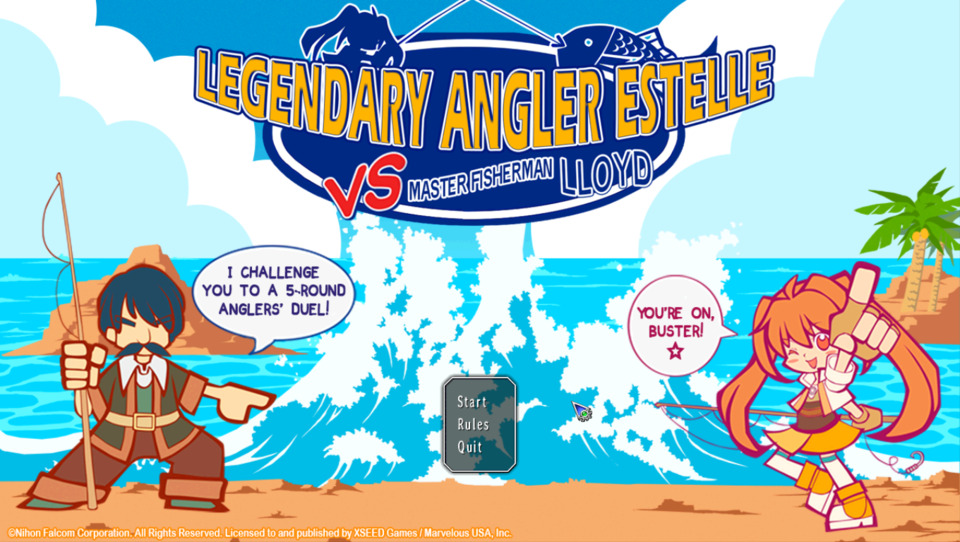
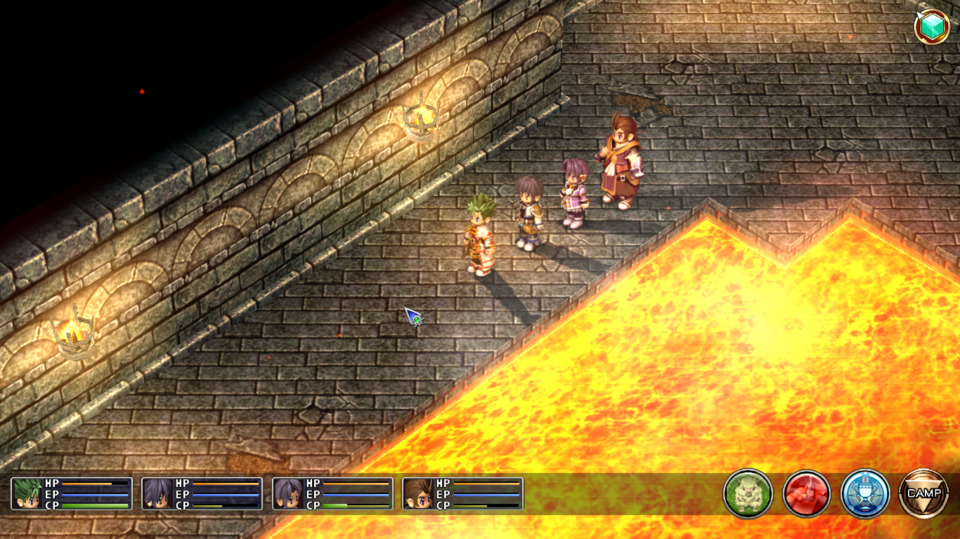
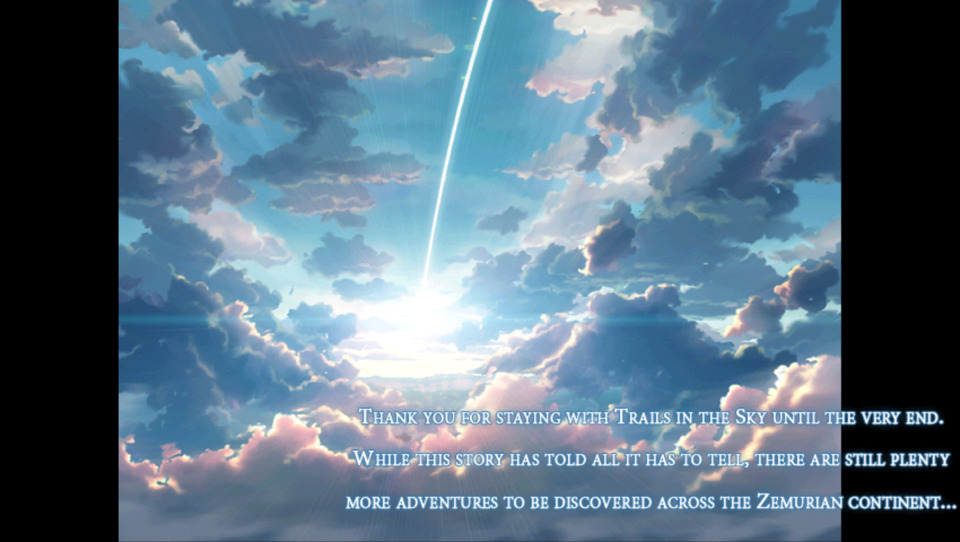
Ranking: S. (That's right, that means it's going into my top ten for 2017. I've yet to decide quite where to put it, but its inclusion will be enough to knock fellow Falcom game Tokyo Xanadu+ down to eleventh place. I suppose it's only fitting that a Falcom game dethrones another (and there's a third in the top ten as well - Ys VIII: Lacrimosa of Dana - so I'd say the developer is well represented regardless). Between the confident worldbuilding and deeply clever and tactical combat, I am a devoted fan of the Trails franchise from this point onwards I think it's safe to say.)
Love 2: Kuso
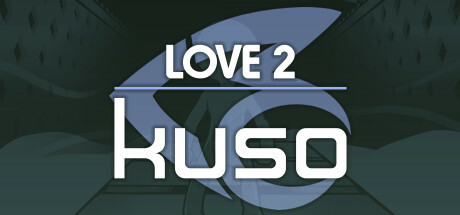
My other 2017 game this month is Fred Wood's Love 2: Kuso, a modest sequel to an already modest 8-bit retro platformer that nonetheless has its charms and deeper aspects. With a mostly monochrome aesthetic torn from the same Sinclair ZX/Commodore 64 era that VVVVVV was inspired by, the player's goal is to make it through a series of tough platforming challenges with some basic jumping. Nothing as elaborate as a double-jump or a wall-jump or anything like that: the game is deliberately simple and straightforward, giving every stage a single color tone and indicating anything that might potentially kill you with a stark white sheen for visibility's sake. The levels are tough and uncompromising, requiring close timing and precision platforming, but with the requisite Super Meat Boy-style rapid respawn.
However, the game - like its predecessor Love - also allows the player to make their own checkpoints as well as providing infinite lives in the standard "Unlimited" mode. This allows the player to make the game as challenging as they like as they make their way through all its levels, and offers an additional menu of various assist features to ameliorate the difficulty even further. Love and Kuso alike are less determined to have you pulling out your hair but to become better at the game at your own pace: it's going to be tough going for a while, but since you can set a checkpoint almost anywhere (though it's a good idea to put it on a safe platform, since your checkpoints can "die" and vanish if they get hit by a projectile or something) anything it throws at you is eventually surmountable at any skill level. From there, you can retry challenging the game with fewer checkpoints and lives lost, and eventually become confident enough to attempt its "Arcade", "Hard", "Speedrun" and "YOLO" modes, where the lives are strictly limited, or pursue any of its tougher achievements. Given a full playthrough is only about an hour or so the first time through, what it lacks in content it makes up for in ways to approach the game from a more seasoned perspective. As was the case with Celeste, it's a game that wants to challenge you until your thumbs have worn down to nubs, but also doesn't want to lose you from the get go with its absurd difficulty. I was content with a single playthrough, since I'm not really the score-chasing or speedrunning type, but I admire the amount of staying power it packs in there.
I also appreciated its chill EDM soundtrack - germane to the type of gaming experience it offers - and how all the Love levels are included for free, much like how the Rayman Origins levels are available to play in its sequel Rayman Legends for those who were late to the party. The game offers a mode that lets you play all of Kuso and Love's levels mixed in together, which might be the ideal if you've yet to play either: this way you get a steady increase in difficulty, rather than having to start over with Kuso's easier, early levels after cutting your teeth on Love's hardest, final ones (either that or they randomized the level order and I never noticed). Since it regularly dips to around a dollar or so in Steam sales and Switch sales alike (I played it on the latter) it's definitely worth the small time and money investment, even if you're not some obsessive platforming savant who intends to conquer every challenge it throws your way.
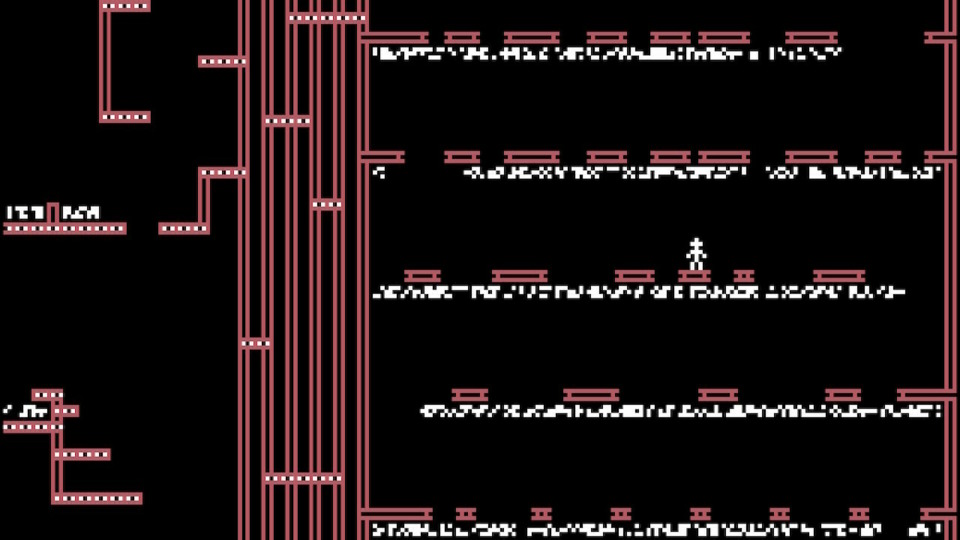
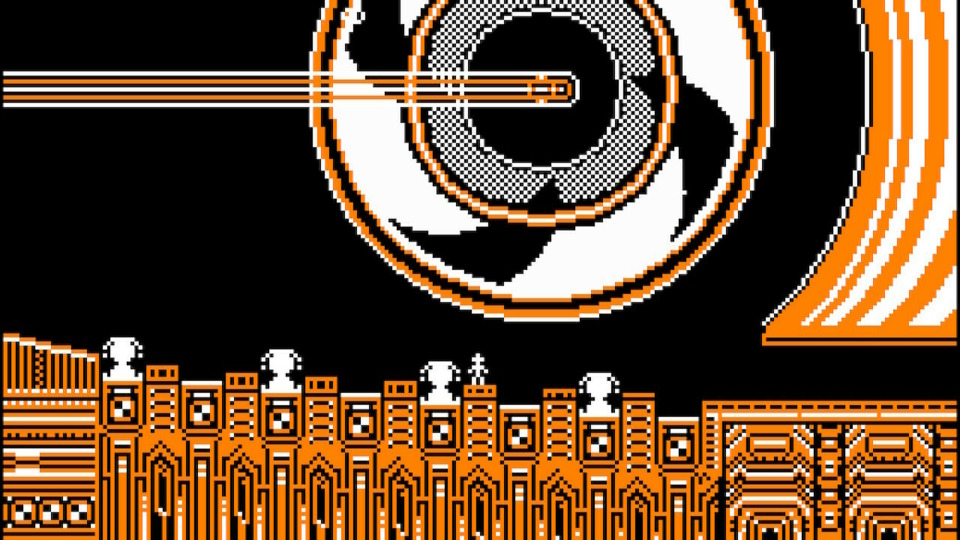
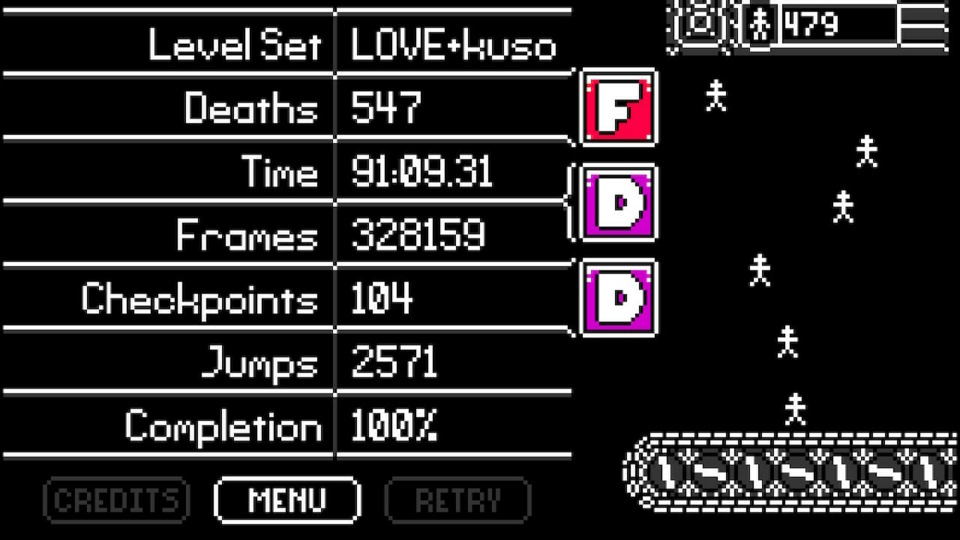
Ranking: C. (At this point even the C-rank, which is mid-tier, is no slouch. While the game is extremely basic by design there's a lot of thoughtful ideas going on behind the scenes working to draw players into the game from any skill level. It's very accommodating to anyone willing to take a chance on it, and offers many reasons to stick around.)
Log in to comment